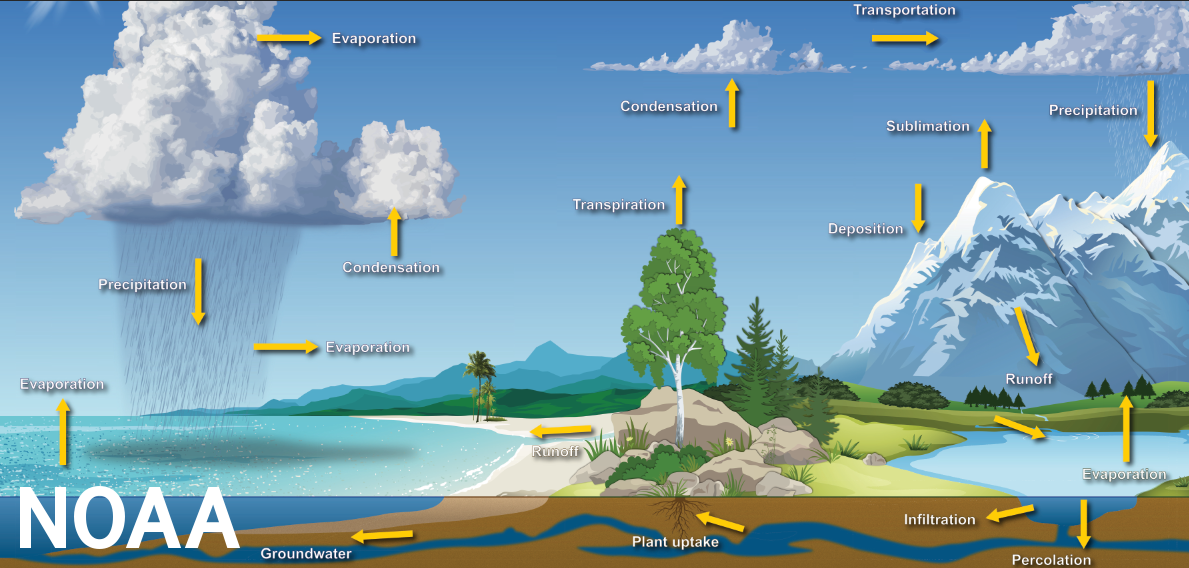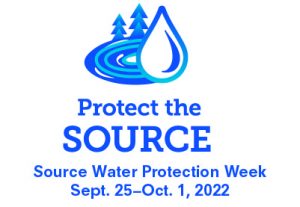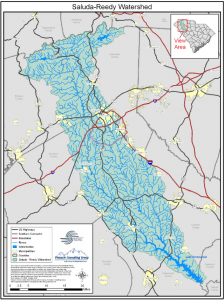
Water Wise Gardening
Lawns and gardens can add beauty to a home, but without careful planning and maintenance, they also can contribute to water pollution and put extra strain on wastewater systems. When planning your garden, remember to check for pipes before you dig. Plant trees and other strong rooting plants at least 10 feet from your lines to avoid root intrusion and cracks in your pipes.
Keep in mind also that anything you use in your garden could wind up downstream, especially after storms when debris, topsoil, fertilizer and pesticides can wash into storm drains or nearby water sources. Chemical fertilizers and pesticides can be especially damaging to water quality. Try some of these alternatives and preventative measures to help Protect the Source!
1. Limit Your Lawn
Lawns tend to require large amounts of water and fertilizer to maintain their beauty, and they are often vulnerable to runoff during storms. Consider limiting your lawn to just the areas you use for play or recreation. Grow native plants, shrubs or ground cover in the extra space. This adds variety and helps to slow runoff, all while decreasing the need to feed with fertilizer. Or, consider using that space to grow vegetables!
2. Avoid Chemical Help
Test your soil to make sure fertilizer is absolutely needed, and then make sure you are using the right chemical compound. This will help prevent overuse of chemical fertilizer and help grow strong plants that can withstand visiting insects without extra pesticides. Try companion planting as a chemical-free way to invite good bugs in and keep the bad bugs at bay.
3. Go Organic
When fertilizer is a must, try organic varieties such as fish emulsion, blood meal or home compost.
4. Create Distance
Never use chemical fertilizers or pesticides within 75 feet of waterways or wetlands.
Source Water Protection Week
All water is connected. You might think of the water cycle as a conveyer belt. It moves from higher ground down through lakes, rivers and streams, and evaporates back into  the atmosphere to form clouds and precipitation, starting the whole cycle over again. The water that moved through this cycle when earth was formed 4.5 billion years ago is the very same water that we all depend on today to cook, clean and drink. This week is Source Water Protection Week, which is dedicated to protecting our drinking water sources. Because all water is connected, protecting drinking water means protecting all water.
the atmosphere to form clouds and precipitation, starting the whole cycle over again. The water that moved through this cycle when earth was formed 4.5 billion years ago is the very same water that we all depend on today to cook, clean and drink. This week is Source Water Protection Week, which is dedicated to protecting our drinking water sources. Because all water is connected, protecting drinking water means protecting all water.
Greenville Water Sources
In Greenville County, tap water comes from three main sources: Table Rock Reservoir, Poinsett Reservoir, and Lake Keowee. Table Rock  and Poinsett are both part of the Saluda River Basin, which includes the Saluda River, Reedy River, Greenwood Lake and many other smaller streams, tributaries, lakes and ponds. Lake Keowee, which is in Pickens and Oconee Counties, is fed largely by Lake Jocassee and mountain rivers. All of these water sources rely on us to keep them clean. Sources of pollution can include everything from everyday litter, to fertilizer and pesticide runoff, to wastewater contamination, and more. Each of us can help protect against pollutants in our own way. Try joining a community wide clean-up, limiting your use of pesticides and lawn fertilizer, and using alternatives to harsh household cleaners (see “Water Wise Gardening” and “Clean Green” for some tips).
and Poinsett are both part of the Saluda River Basin, which includes the Saluda River, Reedy River, Greenwood Lake and many other smaller streams, tributaries, lakes and ponds. Lake Keowee, which is in Pickens and Oconee Counties, is fed largely by Lake Jocassee and mountain rivers. All of these water sources rely on us to keep them clean. Sources of pollution can include everything from everyday litter, to fertilizer and pesticide runoff, to wastewater contamination, and more. Each of us can help protect against pollutants in our own way. Try joining a community wide clean-up, limiting your use of pesticides and lawn fertilizer, and using alternatives to harsh household cleaners (see “Water Wise Gardening” and “Clean Green” for some tips).
Learn Your Local Systems
Source Water Protection Week is a great time to educate yourself about our water systems. Learn more about Greenville’s drinking water sources, how to Rein in Runoff, and efforts that are being made to protect local water systems like Reedy River and the Saluda Watershed.
Clean Green
Everything that goes down the drain ends up in our water systems. You probably know that flushing wet wipes, feminine hygiene products and other items down the toilet cause backups in your pipes. But you might not be aware that they also can wind up polluting source water downstream. Other items that commonly go down the drain, including cleaning products that are marketed to be used in sinks, showers, toilets and drains, also can wind up polluting source water.
When selecting household cleaners, check labels and use the mildest formulas possible. Some products labeled “green” or “natural” might be a good bet, but check the Environmental Working Group’s “Guide to Healthy Cleaning” before you buy. Better yet, save a buck and make your own environmentally safe cleaning products. Vinegar and baking soda do wonders on grease, and vinegar with a few drops of your favorite essential oil or a squeeze of lemon can act as a sweet-smelling all purpose cleaner. Check out WebMD’s “Guide to Natural Cleaning” for some more DIY tips.